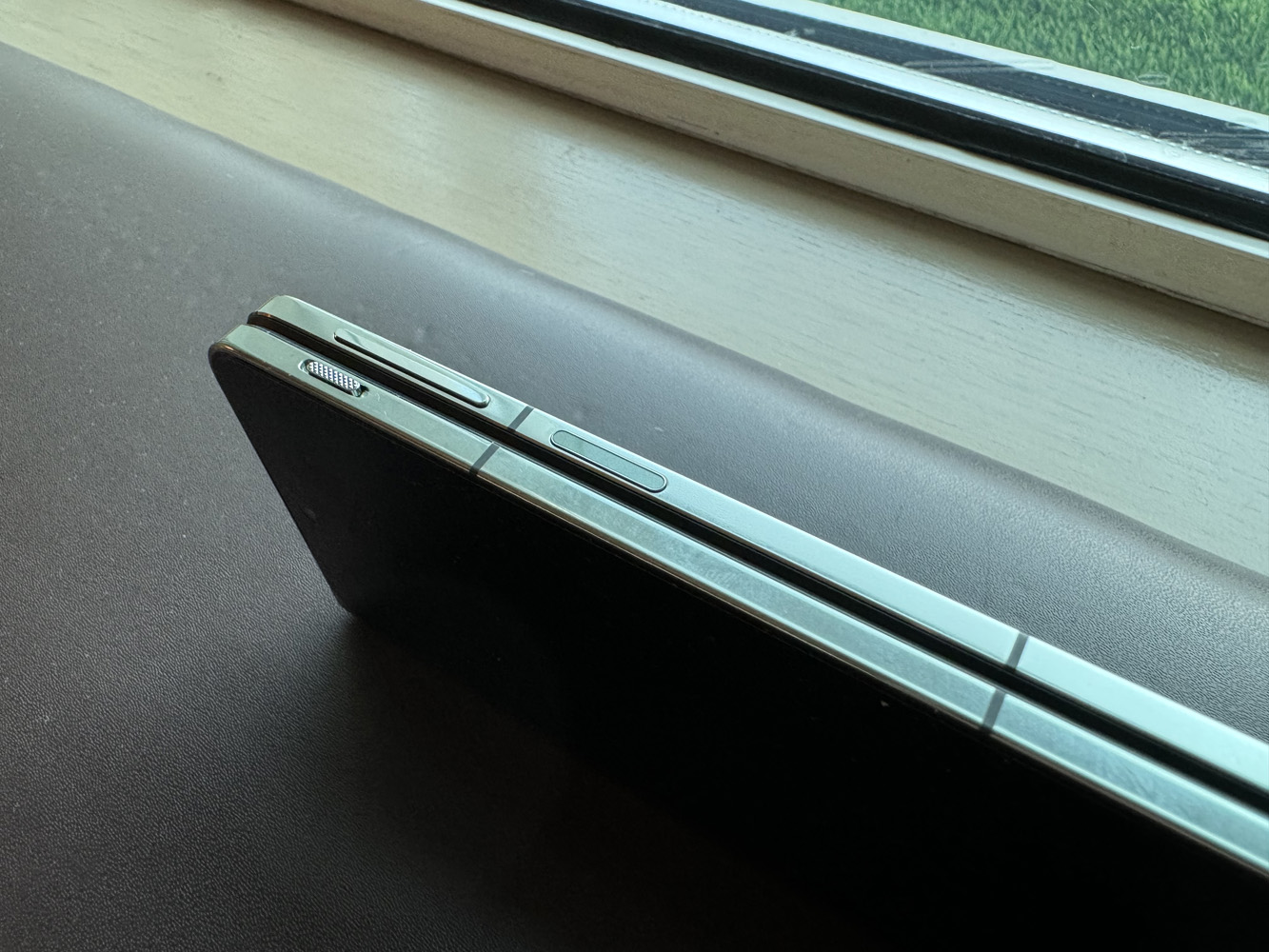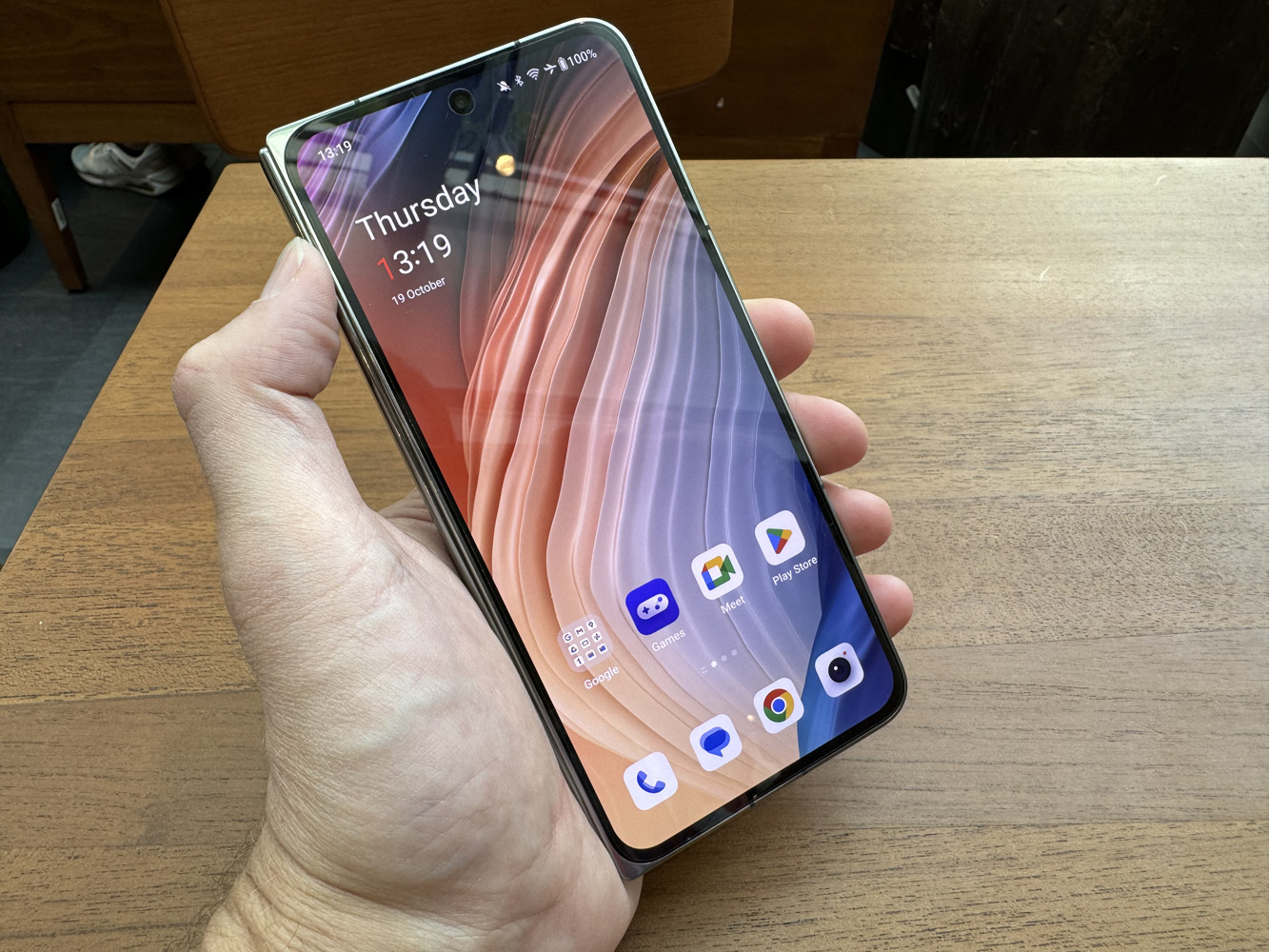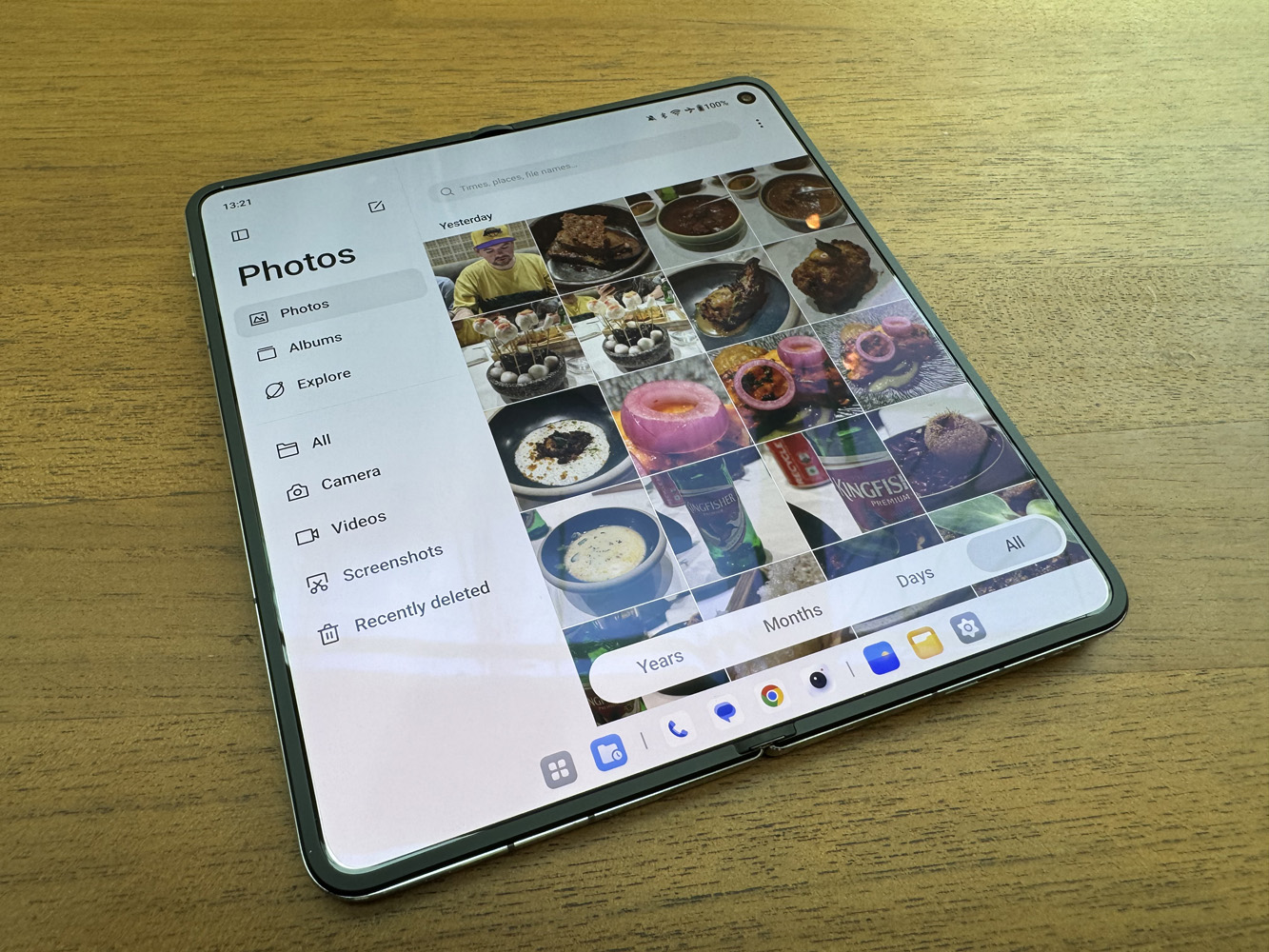OnePlus Open review: a fabulous foldable
OnePlus' foldable has finally arrived - but is it ahead of the key rivals from Google and Samsung?

Stuff Verdict
Lower price, brilliant build: the OnePlus Open is the finest foldable we’ve seen yet. The only question is, who will actually buy it?
Pros
- Fabulously built
- High specification
- Brand new camera tech
Cons
- Cost, obviously
- Digital zoom a struggle in lower light
Introduction
The long-awaited and much-leaked OnePlus Open foldable smartphone may feel cutting-edge, but it also feels a little less new to me.
I went hands on with the Oppo Find N2 a year ago, the China-only foldable from OnePlus’ parent company. And while the OnePlus Open takes after the newly-announced Find N3 instead, there is a lot that carries over from that model.
Key rivals are, predictably, Google’s Pixel Fold and Samsung’s Galaxy Z Fold 5. Both of which it undercuts on price at $1699/£1599/1799 Euros – still expensive, but somewhat less so than initial foldables. We’ve done a full feature comparison of the three phones here: OnePlus Open vs Samsung Galaxy Z Fold 5 vs Google Pixel Fold?
And if you are considering one of the rival devices then don’t forget to check out our full rundown of the best foldable phones.
How we test smartphones
Every phone reviewed on Stuff is used as our main device throughout the testing process. We use industry standard benchmarks and tests, as well as our own years of experience, to judge general performance, battery life, display, sound and camera image quality. Manufacturers have no visibility on reviews before they appear online, and we never accept payment to feature products. Find out more about how we test and rate products.
Design
The OnePlus Open is available in an emerald dusk (aka a kind of shimmering green) finish in the UK and EU. The US gets a smart matt voyager black finish, too. It is a shame that one won’t roll out more widely. Most of my pics are of the green model I’ve had for review, though I grabbed a quick look at the black model back at the OnePlus Open launch event as well as you can see here.



It’s certainly true that 2023 has seen foldables get lighter and thinner. The Open clocks in at 11.7mm thick folded and 5.8mm unfolded and while it naturally does feel thicker folded in your pocket, such a sizeable device no longer feels outrageous in the pocket. A lot of that is due to the weight which, at 239g, isn’t miles off of last year’s iPhone 14 Pro Max. Obviously the iPhone 15 series is lighter, but the point still stands.
The phone has quite angular styling, but it feels nicely tactile in the hand – the edges are nicely finished off. As you can see, the camera roundel is huge. I don’t think it looks too bad, but I know there will be some of you reading this who aren’t so keen!
Alert slider and hinge
The famed OnePlus alert slider comes to the Open, which is a welcome addition. I like physical sliders for this and it’s one thing we’re missing a little from the iPhone 15 Pro with its Action Button. OnePlus says the size of the slider has been increased for the Open, while its position has been adjusted for one-handed operation.
OnePlus says the module for the slider is 1mm smaller than on the OnePlus 11, meaning it doesn’t take up so much space inside the phone. There’s a fingerprint sensor embedded in the power button on the side.





The hinge is a key component of any foldable phone and the difference between this Flexion hinge and early foldables is like night and day. The hinge opens smoothy and slaps shut nicely. There’s no juddery operation at all – it’s so smooth (OnePlus says this hinge has 69 parts).
The excellent hinge here certainly signifies that product development in terms of foldable phones is really coming along. The two halves clasp together nicely and sit flush with one another. There’s no gap and you don’t feel like you have to treat it like it’s a flower about to fall apart.

Displays
There are 6.3in outer and 7.82in inner AMOLED displays and both are capable of 120Hz refresh rates. There is face unlock available on both displays and in reality, that’s how you will unlock your phone. As I mentioned there’s a fingerprint reader, but I found I rarely needed to use it.
On the main display, there is a crease – there’s no point in pretending it isn’t there, but it has been kept to a minimum, and the phone unfolds to be virtually flat, though it isn’t quite completely level. The crease doesn’t detract or distract from what’s on the display otherwise, but with the phone open and screen off, it’s clearly visible.




As you’d expect, I found the unfolded display was superb for reading content and browsing photos. I found myself regularly unfolding the phone rather than just using the front screen. When you’re out and about this is less appealing as something you’d do as a matter of course. Instead, you’ll find yourself using the front display for replying to messages and so on.
Specs and performance
The OnePlus Open’s spec sheet is very impressive and is about as high-end as it’s possible to get barring recent announcements. The Qualcomm Snapdragon 8 Gen 2-platformed phone supports 5G as well as Wi-Fi 7 out of the box. There’s also a large dollop of RAM available at 16GB. Interestingly there’s only one storage size available at 512GB, which matches the Pixel Fold. It’s a good size and more than many need.
The phone is IPX4 rated, so will withstand splashes – though not a dunking. That’s one key difference between today’s standard flagship phones and foldables – the OnePlus 11 is IP64-rated, for example. It’ll be interesting to see who breaks though this barrier. Surely there will soon be a properly water-resistant foldable that prevents damaging ingress through the hinge.
As you’d expect from a OnePlus phone, there is speedy wired charging. It’s not as quick as on some other OnePlus models since it’s set at 67W. But the Open can still be charged from empty to 100% in 42 minutes, which is fine.

Cameras
There are triple Hasselblad-enhanced cameras housed within the aforementioned chunky roundel on the rear. It’s an eye-catching camera arrangement, not least because of the large physical size of the array.
The OnePlus Open’s camera capabilities are undoubtedly impressive for a foldable. This is a flagship phone trio of snappers (which you’d expect for the price, of course). The main lens is a Sony LYTIA-T808 48MP f/1.7 unit that supports pixel stacking.
This is the first time that Sony’s latest-gen sensors have been included in a foldable and we’ll see them in a lot more upcoming phones in 2024 (Sony and Oppo announced back in September that the pair would be working on new devices using the tech). The pixel stacking essentially means a physically smaller sensor can take in more light.
The second outer snapper is a 64MP 3x periscope telephoto lens. That’s by no means the whole story though as it boasts a 6x hybrid zoom. Indeed, OnePlus calls this an ‘in-sensor lossless zoom’. You can see from the results below that I found this works impressively well.
And that’s not the end of the tale either, because there’s a whopping great 120x digital zoom. I got some decent results off of this at full zoom in good light. Providing you can keep your hand steady enough of course! Low light for this is a no-no though. It’s much, much better still if you, say, go for 20x and it’s very effective at taking shots around that level of magnification.
Finally, there’s a 48MP ultrawide cam with autofocus. As with every ultrawide I use, I found I used this pretty sparingly aside from shots where I was too close to my subject – usually a building I’m standing by or when I’m trying to capture an entire scene.
The dual selfie cams also have impressive pixelage; 32MP inside and 20MP outside (yes, there’s one on each display). Our smattering of selfie portraits looked great. OnePlus says it has worked to improve Hasselblad Portrait Mode on this phone over previous versions and we got some pleasing results.
Sample images
The images I took in daylight were really crisp and clear with exposure only becoming a slight issue against a bright sky. Low light photography is clearly much improved when you compare it to earlier OnePlus phones. It’s not best-in-class as yet, but I feel it’s much better than, say, those taken on the OnePlus 10 Pro (for the record, I liked the OnePlus 11‘s low light capabilities).
You can see a selection of my sample shots below.


















Software
The OnePlus Open is running Oxygen OS 13.2 out of the box, though an update based on Android 14 is imminent (I don’t have it on my review sample yet). There are four years of feature updates guaranteed (five years for security updates). OnePlus’ long feature update life has now been bettered by Google’s Pixel 8 promise of seven years of update life, so it’ll be interesting to see how this race to the top develops.

Oxygen OS has integrated some sweet software touches for working across the larger display. One Plus calls this Open Canvas and it makes using up to three app windows pretty easy and you can save preset workspaces.

Most likely you will be using two simultaneously and this is really, really easy to transfer to switch into. You can split the screen into two apps simply by swiping two fingers down the middle of the display. There’s an Open Canvas tutorial in the settings menu, while pop-up hints help you through the process if there’s a problem.

As with other foldables (as it’s part of Android), there’s a taskbar but OnePlus has introduced an option to get quick access to recent files and, as shown here, photos.

Typing is a little strange on the larger display, but then it is on pretty much every tablet display, too. What is slightly challenging here to fluid typing is that the keyboard splits so you’re not typing across the fold. Of course, you get used to it, but I’m not sure I like it.

OnePlus Open verdict
There are now a bunch of really brilliant foldable phones on the market – but they still need lower pricing to really jump into anything near the mainstream.
But what OnePlus has produced here is a very fine foldable. Crucially, the form factor hasn’t meant compromises in terms of performance or the specifications of the device. Everything is fully flagship class.
Who will buy this phone? It’s a good question when OnePlus is known primarily for well-priced sub-flagships. So can it bring its fans to the foldable market, too? Time will tell.
Stuff Says…
Lower price, brilliant build: the OnePlus Open is the finest foldable we’ve seen yet. The only question is, who will actually buy it?
Pros
Fabulously built
High specification
Brand new camera tech
Cons
Cost, obviously
Digital zoom a struggle in lower light
OnePlus Open tech specs
Screens | 7.82in 2440×2268 + 6.3in 2484×1116 120Hz OLED |
| CPU | Snapdragon 8 Gen 2 |
| RAM | 16GB |
| OS | Android 13 + OxygenOS 13 |
| Storage | 512GB |
| Cameras | 48+64+48MP rear, 20+32MP front |
| Battery | 4805mAh |
| Dimensions | 153x143x5.8mm unfolded, 153x73x11.7mm folded |
| Weight | 245g |
